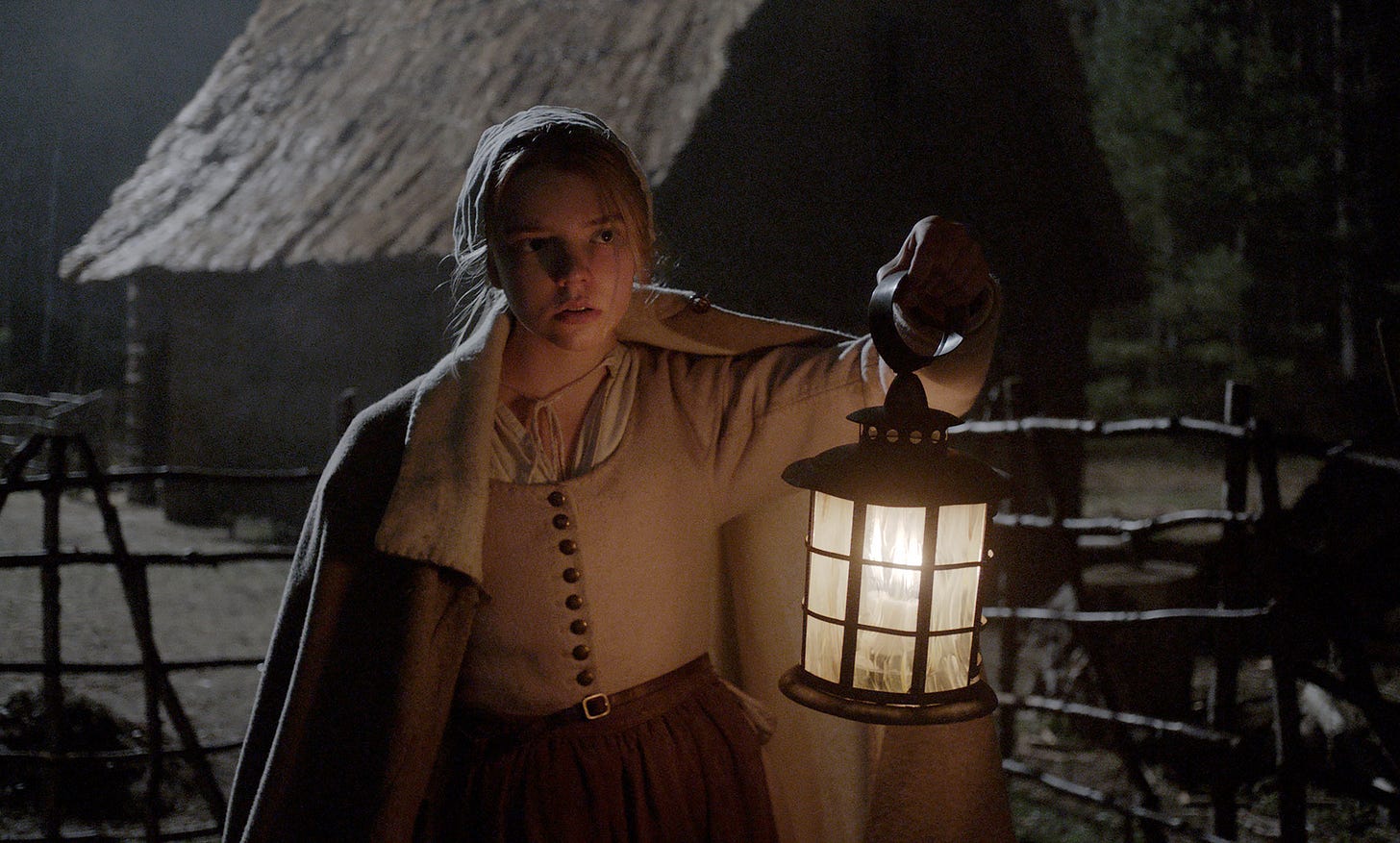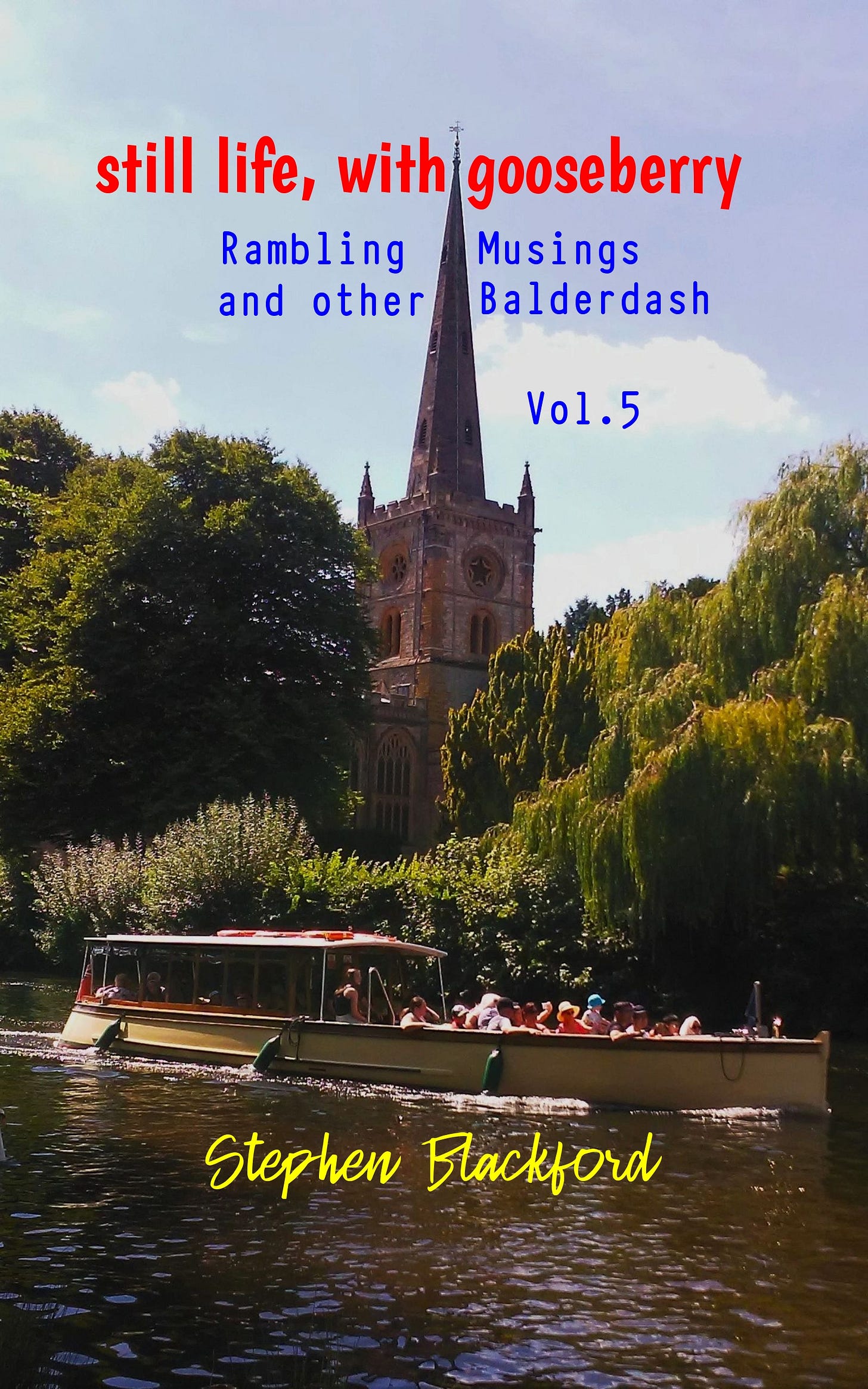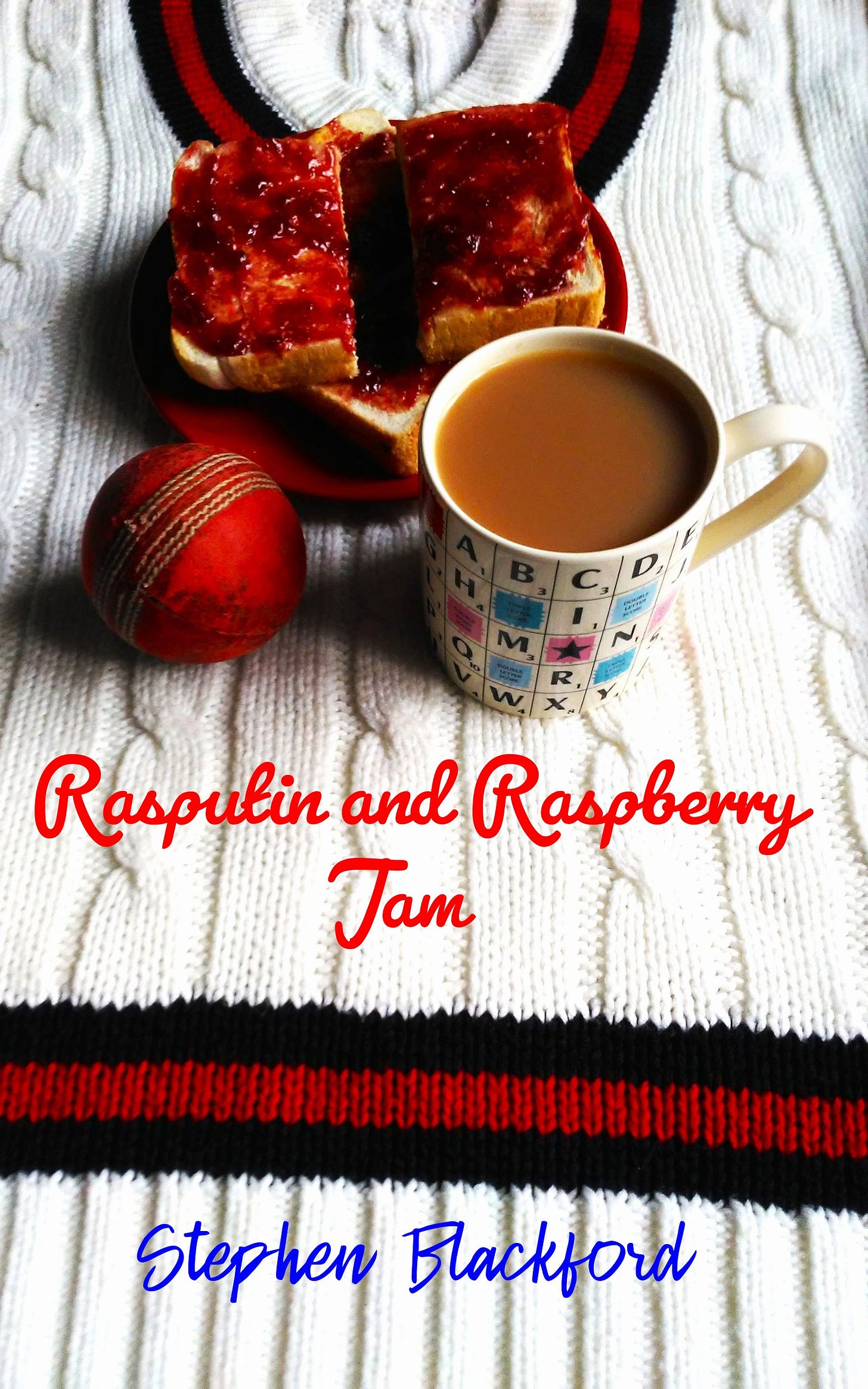The Witch (2015) a retrospective
Before Nosferatu and The Lighthouse, Robert Eggers debut film is an astonishing and disturbing folktale

With an impending cinema trip on the horizon to see this year’s Nosferatu and after telling everybody who would listen how INCREDIBLE his 2019 film The Lighthouse is, I thought it high time I return to Robert Eggers’ debut cinematic release and in the dark of a recent early morning I found a truly disturbing religious horror that may over time even eclipse The Lighthouse in my affections for the creations of the American filmmaker. But first, a brief flavour for the opening 10 minutes, the final frame of the film and my concluding rambling musings for a film I couldn’t possibly recommend highly enough to you.
From a pitch black screen and the beginnings of Mark Korven’s musical soundtrack of mournful strings “The VVITCH — A New England folktale” is displayed before another pitch black screen follows (a theme of the film) and then lingering camera shots on first “Thomasin” (Anya Taylor-Joy) and then her brother “Caleb” (Harvey Scrimshaw) as their until now unseen father “William” (Ralph Ineson) pleads his case for the family to remain on the plantation as well as questioning aloud why he travelled from England with his family across the ocean to be here and “Was it not for the pure dispensation of the Gospels and the Kingdom of God?”. Now Eggers’ camera settles and lingers on the youngest members of William’s family, twins “Mercy” (Ellie Grainger) and “Jonas” (Lucas Dawson) as their still as yet unseen father pleads for his family’s future within the plantation to a panel of three puritan judges, seen for the first time following another change of camera angle and from behind William as he claims he cannot be judged by “false Christians”. This becomes the first of three continuing angles with two more quickly establishing the crowd on either side of the courtroom before a return to a longer angle behind William as the judges now threaten him and his family with banishment from the plantation. A fourth camera angle shows a distressed “Katherine” (Kate Dickie), looking at her husband as he proclaims “I would be glad on it” if his family were banished before a return camera angle settles on the judges as they send the family into the wilderness. “How sadly hath the Lord testified against you” proclaims a defiant William before a fifth and final camera angle sees Caleb hurrying his sister from the courtroom and as the gates of the plantation are locked behind them, the family, with their entire earthly belongings crammed on the back of a cart, are seen being drawn by a horse as they bounce unsteadily into the distance. Eggers’ camera again lingers and never moves as the family move slowly, singing songs of praise to Jehovah as they go before these songs merge with the awkward, discordant strings of Mark Korven’s musical soundtrack, then a night time campfire before early morning prayers captured first from behind and then from the side capturing the satisfied smiles of William and Katherine.
Fade to Black.
A wide angled shot now establishes a small holding or farm with a house, a second in the process of being built as well as a small shelter for the family’s animals beside a small collection of tall sweetcorn plants. We cut to a close-up of a praying Thomasin, begging forgiveness for the sins of not praying, being neglectful of her parents and, in secret, she has “played upon the Sabbath”. As her prayers continue as a narration we now see Katherine breastfeeding her newborn baby Samuel as Caleb, Mercy and Jonas help their father tend to the corn plants in the garden, with Thomasin admitting her sinful behaviour will ensure she sees “hellfire” in the future but she will continue to pray and beg for mercy.
We cut to Katherine now sitting in the garden whilst cradling baby Samuel. Calling Thomasin to her, Katherine smiles as her eldest daughter carries her newborn to the edge of the garden whilst Eggers’ camera lingers for the first time of many on the forest nearby that backs onto their farm. To Samuel’s screaming delight, Thomasin plays Peek-a-Boo over and over again. Once, twice, three times, but opening her eyes after a fourth Thomasin screams as the blanket where Samuel had lain is now empty. Screaming Samuel’s name and running towards the forest, Thomasin approaches the entrance to the heavily wooded area before stopping. We now cut to two rolling camera angles of a barely visible red robed figure carrying a crying baby through the forest before, again barely visible and only via firelight or candlelight, we see a naked baby, a naked adult figure, then an elongated and badly disfigured hand before the blade of a knife. Next we barely see the naked figure grinding what appears to be flesh into blood before smearing this over their body, a body next (barely) seen cavorting and spreadeagled beside an unlit campfire in the darkness and now, the back of a distorted bodily figure beneath a full moon.
Fade to Black.
“This film was inspired by many folktales, fairytales and written accounts of historical witchcraft, including journals, diaries and court records.
Much of the dialogue comes directly from these period sources”.
So there you have the beginning and final frame of Robert Eggers’ The Witch. In the 80+ minutes in between you’ll find a family disintegrating under the weight of grief and loss, familial as well as their religious faith too as they battle with deceit and truth, God and Satan, and particularly the overbearing weight of the carrying of sins as an ever building sense of appalling dread fills the air until, with 30 minutes to go, it explodes in an Exorcist like fury and never, ever relents in a final half an hour I can only compare to the horror filled ending to Ben Wheatley’s Kill List. If I added the unbearable sense of impending dread and supernatural horror contained within The Overlook Hotel and The Shining, well that would mean The Witch keeps very exalted company indeed.
As well as being Robert Eggers’ debut directorial effort this was also Anya Taylor-Joy’s first credited acting role (and what a stratospheric career she’s enjoyed in the decade since) and whilst both Kate Dickie and Ralph Ineson had long TV and film careers before The Witch (and since, with Ralph continuing to collaborate with Eggers on two of his three films post The Witch and Kate too on The Northman) they both turn in quite incredible and compelling performances that should have seen them garner a slew of awards. The film as a whole, together with debutants Eggers and Taylor-Joy, did find success throughout the film industry in the year following release with several “Best Film” or “Best Horror Film” awards as well as respective individual gongs for director and actress alike.
I’ve held a lifelong fascination for debut films and The Witch is up there with the very, very best.
“God, My Lord, I now begin, oh help me and I’ll leave my sin
For I repent and now shall be, from evil I will turn to thee
None ever shall destroy my faith, nor do I mind what Satan saith”
The Lighthouse (2019) — Read Along
Originally penned and published on 23rd September 2022, my spoiler free appreciation of this incredible film is now paired with my Youtube channel reading of my review recorded almost exactly a year later. So should you wish to join in with the ethos a…
Whilst you’re here I may as well brag about the release of my two recently self-published books. Both are free to read if you subscribe to Amazon Kindle “Unlimited” or reasonably priced in both paperback and hardback. Go on, treat yourself or a loved one and help out an Indie Author! Buy the books if you’re financially able to. They also look far, far better in print!
We HAVE to keep the spirit of reading books alive and well.
Thanks.
"still life, with gooseberry" - link to Amazon
"Rasputin and Raspberry Jam" - link to Amazon
Thanks for reading. I hope this message in a bottle in The Matrix finds you well, prospering, and the right way up in an upside down world.







